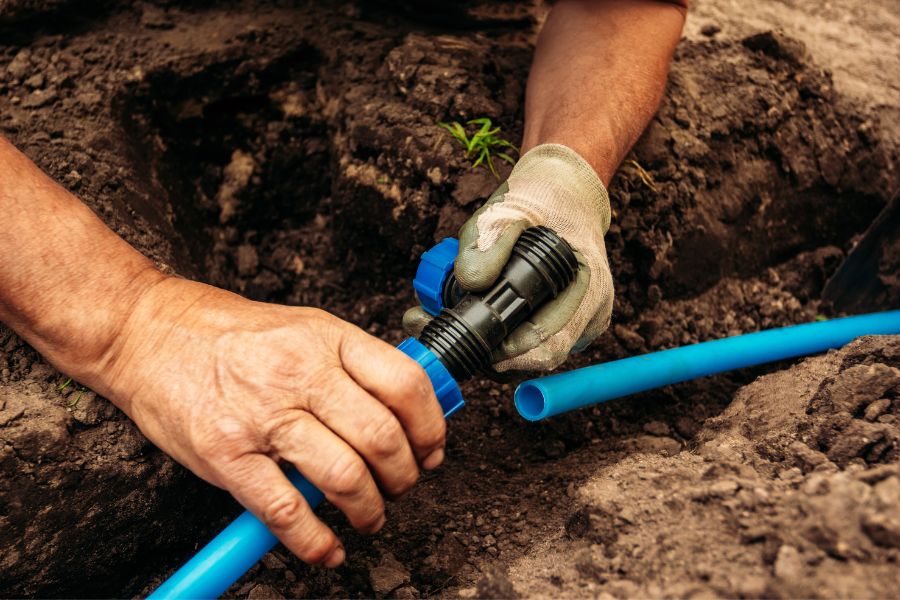Over time, dirt, debris, leaves, and other debris can accumulate around the exterior of your home’s foundation and cause water to pool around your basement walls. This water can seep into your basement and create costly damage like mold growth, rotting wood, poor air quality, and structural damage. A reliable drainage system is essential for managing moisture levels in the soil around your home. It helps keep the pressure on the walls of your basement from becoming too great so that no water can make its way inside.
In this article we’ll discuss how drainage systems work and why they’re so important for waterproofing your basement. We’ll go over the different types of drainage systems available as well as their main benefits!
What Is A Drainage System?
A drainage system is essentially a network of drains installed below and around a building’s foundation to prevent water pooling near it or in it. These drain networks are made up of perforated pipes which are installed along the perimeter of your foundation walls at regular intervals both inside and outside. The drain channels are then filled with gravel or soil to divert any surface water away from the structure over time by allowing it to soak into the ground before it reaches the foundations or basements below them.
Types Of Drainage Systems And Their Benefits
There are two main types of drainage systems used in basement waterproofing: interior drains and exterior drains:
- Interior Drains – Interior drains are typically installed directly beneath the concrete slab which covers most basement floors; this gives them direct access to any water that may be leaking through cracks or joints in the concrete slab(s). The goal here is to prevent further moisture damage by collecting excess water before it becomes trapped within walls or cavities within a house. These kinds of drains also provide added protection against flooding caused by heavy rains or storms because they help move larger volumes of excess liquid away quickly rather than allowing it to sit in basements over long periods of time unchecked where further issues could arise (such as mold growth).
- Exterior Drains – Exterior drainage systems are installed around the periphery of homes at various points along their outer walls; these include such areas as eaves troughs (which collect rainwater runoff), drywells (a type of pit designed specifically for draining away excess liquid), gutters/diverters (which manage how rainwater flows off roofs), window wells (for preventing flooding near windows) among others; all these serve critical roles in keeping foundations dry during inclement weather conditions, thus protecting them from being weakened due to saturation with standing liquids over extended periods without drying out fully first.
Benefits Of Installing A Drainage System
Installing a reliable drainage system brings several benefits such as reducing the risk of flooding, reducing water stagnation, and protecting property from water damage.
A reliable drainage system can help protect your home from costly repairs caused by a wet basement. If water is not drained away properly, wood beams and structures can rot and mold can grow, threatening the safety of your family. Drainage systems also reduce the chance that groundwater will enter into buildings, avoiding expensive plumbing repairs. By putting in a drainage system, you can save money on short-term use as well as long-term repair costs due to too much moisture indoors.
Drainage systems can greatly reduce flooding and provide clean water to the surrounding areas. By capturing surface water runoff, drainage systems can help control floods and water damage to homes, businesses, and other infrastructure. When these systems are properly installed, they also prevent soil erosion by slowing down the runoff of water from higher elevations. Additionally, drainage systems can provide a source of clean drinking water for communities or populations living in areas with limited access to safe drinking water.
The installation of drainage systems also helps protect plant life from drying out or drowning due to excess moisture in an area. This provides an added layer of protection for the environment that would otherwise be vulnerable to changes in weather conditions such as droughts or heavy rainfall. Furthermore, maintenance costs associated with drainage systems are relatively low compared to other types of flood prevention methods such as levees or dams.
Installing a drainage system also reduces the risk posed by toxins present in wet environments such as infected soil or stagnant pools of water. These toxins could be damaging to both human health and animal habitats if left unchecked, so having a functioning drainage system would help minimize any potential risks by allowing rainwater and other waste products to easily dissipate into the earth safely.
In Conclusion
Drainage systems are essential for managing the free flow of water, preventing flooding and erosion, and ensuring a safe living environment. Moreover, they can provide aesthetic value to a property, preserve foundation integrity, and reduce pests and other harmful organisms. Installing a drainage system is an investment that pays dividends in the long run: it will help maintain your garden or landscape while also providing peace of mind that your home or workplace is protected from water-related damage.
When you need a team of professionals to install drainage systems on your property, IcyReno is the team that you can trust. Call the experts at IcyReno Waterproofing today – we’re here to help when you need us the most.
